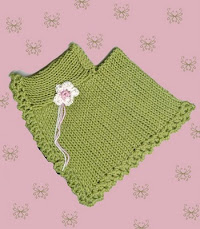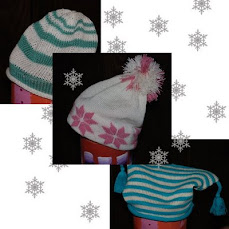Actually, I made two New Year's resolutions this year in regard to machine knitting. The first was to use up yarn, donate items made from it, throw some away, whatever was needed to reduce the stash. The second, which is the topic of this post, was to learn my ribber better. When I first got my 970 +ribber, I tried various cast on techniques and didn't get attached to any of them. So, my usual thing was to start my piece with waste yarn, finish the piece, turn it upside down and knit the rib downwards. I liked the cast- off look when going between the beds better than any cast- on I found. I purchased a garter carriage about a year ago and used that a lot too---making the ribber even less enticing. But, that is how I got "ribber challenged".
So, I got my ribber out the other day and proceeded to set it up. To my consternation, I found that I was missing the setting screws that fit into the setting plates to attach the ribber to the main bed. They are very distinctive---flat but nice looking, if a screw can be nice looking. (NO SNICKERS, please.) I looked everywhere, searched every conceivable nook and cranny in my knitting room --- to no avail. I must have put them in a safe place, so safe the FBI couldn't find them. I went to the local, old-fashioned hardware store and had a nice young man help me find the right metric screw size. $.17 each. Put them on, attached the ribber and ouch. Didn't fit exactly right so the ribber wasn't adjusted the way it was supposed to be adjusted. No ribbing that day.
Thinking these setting screws for the Brother ribber would be easily obtained, I emailed several Brother dealers. Not so easily obtained, I found out. Did manage to snag four of them. Two for now and two for good measure. It appears that they are as scarce as hens' teeth. Bought all four so that I'd be less likely to find myself in this pickle in the future. Lo and behold, I screwed them in, attached the ribber, and the setup looks exactly like the picture in the manual. Moral of the story, don't hide things in such remote safe places. Or something like that. My friend Sandy screws hers to the setting plates when she takes the ribber off. Makes a ton of sense. They are at least bigger and not as likely to get lost. As for me, however, it's unlikely I will ever remove this ribber again in this lifetime.

That hurdle over, I decided I would begin my ribber journey. A friend gave me this book. If you are ribber challenged, but want to get better, I would recommend it. I decided to go through each example, one at a time and not proceed until each came out fairly well. Meticulously following directions, I thought surely victory would be mine. ICK! Nothing was turning out. Had random stitches tucking in the middle of the swatch, all on the ribber. So, I took the center 20 ribber needles and exchanged them for the 10 end ribber needles both sides. I see a big truckload of shiny new ribber needles coming to my house in the near future. Anyway, no more tucking, so onward and forward I went.
Here are the first two techniques in the book: a 1 x 1 with the manual's cast on. The edge fluted a bit at first, but after it sat for a while it shaped up. And then I did a 2 x 2 rib with the manual's cast on. Boy, that was not easy getting the weighted comb in the right spot. So, I ewrapped on, knit a row, transferred stitches to the ribber and knit away. Easier and looked ok.

Gathering courage, I was ready to move on to the next one when the dreaded static monster struck. Having had this before, I recognized that awful grating sound when moving the carriage in one direction. I misted the room, rubbed down the beds with dryer fabric sheets, oiled everything in sight, had a gin and tonic (to eliminate the possibility of the static coming from my body of course), used Cathie Sanders' copper mesh and wire, misted the room some more, sprayed the yarn and beds with anti-static spray and NOTHING WORKED! Really bummed out, I had to quit for the night. Didn't want to wreck my machine, doncha know.
Thinking there must be valid reasons for my ribber avoidance syndrome that shouldn't be ignored, I was actually thinking maybe I'd forget about this resolution of mine. Then I happened to be talking to Amanda at Knit and Sew World in St. Peter about a yarn order when I mentioned my frustration with the static. She said, "Have you tried putting your yarn on a piece of rubber?" Long story short, I hadn't, I did and now all is heavenly.
Next two swatches: English rib and Fisherman's rib, knit one after the other.

and after that, full needle rib.

Not wanting to tempt fate, I'm quitting the ribbing for the day. Thanks for hanging in with me to this point. Can you tell it has been a bit traumatic? Will move on tomorrow to bigger and better things.






















































































